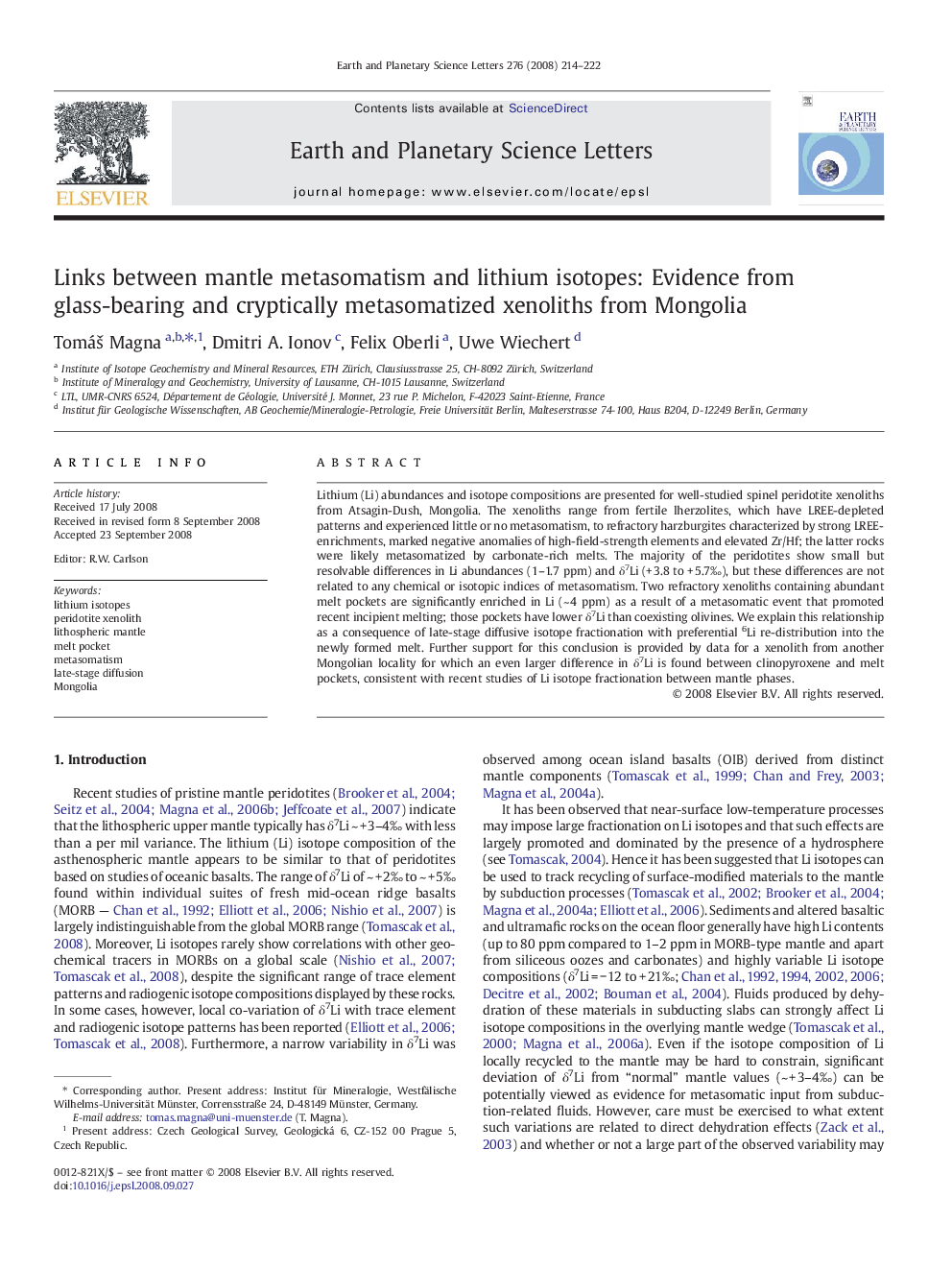| Article ID | Journal | Published Year | Pages | File Type |
|---|---|---|---|---|
| 4679487 | Earth and Planetary Science Letters | 2008 | 9 Pages |
Abstract
Lithium (Li) abundances and isotope compositions are presented for well-studied spinel peridotite xenoliths from Atsagin-Dush, Mongolia. The xenoliths range from fertile lherzolites, which have LREE-depleted patterns and experienced little or no metasomatism, to refractory harzburgites characterized by strong LREE-enrichments, marked negative anomalies of high-field-strength elements and elevated Zr/Hf; the latter rocks were likely metasomatized by carbonate-rich melts. The majority of the peridotites show small but resolvable differences in Li abundances (1-1.7 ppm) and δ7Li (+ 3.8 to + 5.7â°), but these differences are not related to any chemical or isotopic indices of metasomatism. Two refractory xenoliths containing abundant melt pockets are significantly enriched in Li (~ 4 ppm) as a result of a metasomatic event that promoted recent incipient melting; those pockets have lower δ7Li than coexisting olivines. We explain this relationship as a consequence of late-stage diffusive isotope fractionation with preferential 6Li re-distribution into the newly formed melt. Further support for this conclusion is provided by data for a xenolith from another Mongolian locality for which an even larger difference in δ7Li is found between clinopyroxene and melt pockets, consistent with recent studies of Li isotope fractionation between mantle phases.
Related Topics
Physical Sciences and Engineering
Earth and Planetary Sciences
Earth and Planetary Sciences (General)
Authors
TomáÅ¡ Magna, Dmitri A. Ionov, Felix Oberli, Uwe Wiechert,
